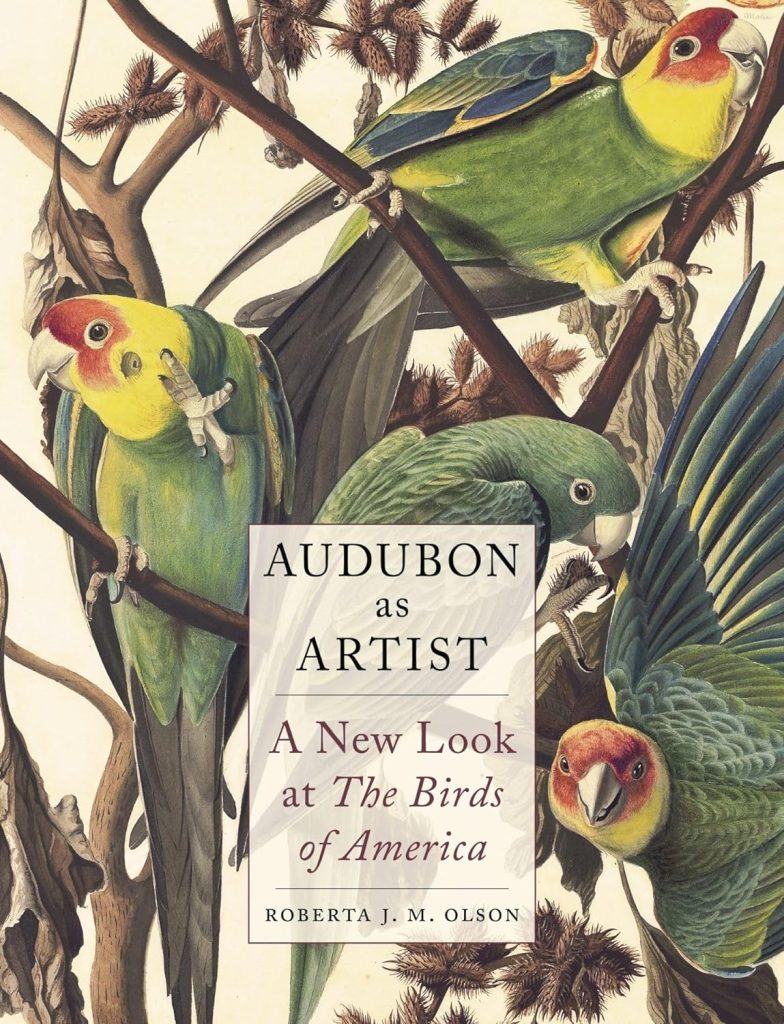John James Audubon, like many founding figures of the United States, tends to feel mythic, larger than life. His name and legacy continue to inform contemporary culture; his “Birds of America” is iconic, a central figment of our visual and natural history. Like most of the men at the forefront of United States history, many biographies have been written about Audubon, who was born to his father’s mistress in Saint-Domingue (Haiti) in 1785. A new book, Roberta Olson’s “Audubon as Artist: A New Look at The Birds of America,” explores an until-now neglected aspect of Audubon’s life and art.
“Audubon as Artist” takes as its aim a relational view of the autodidactic artist and naturalist. Olson follows a biographical timeline, but her intention is less portrayal of Audubon’s life (though plenty of that comes through) and more examination of his connections to other artists, and his struggle to bridge the seemingly disparate worlds of visual art and the natural sciences. Throughout the lively text, with accompanying color images, Olson situates Audubon among the artists of his time, pulling him into a lineage of oil painters, watercolorists and engravers. She documents many of her artistic connections, for example, citing Jacques-Louis David’s “Napoleon Crossing the Alps” as inspiration for Audubon’s “Golden Eagle,” while she makes educated guesses based on source documents for others. Audubon’s birds indicate that the artist was likely eidetic, meaning he had a great propensity for recalling visual images in vivid detail. In this regard, Olson cites the original art for “Yellow-breasted Chat,” which features a courtship scene with one of the competing males in a dancing, butterfly-esque position. Though Audubon argued for his vision, following objections from others, including his engraver Robert Havell, the flamboyant bird was removed from the plate. As it turns out, photography has captured the Chat in this pose, thus proving Audubon’s vision correct.
This thorough, engaging book can also be read in defense of Audubon. He was a controversial figure in his own time, as his sometimes blustery behavior and outlandish woodsman persona occasionally offended people. Today—again like many of the men of his era—Audubon has come under criticism for social gaffes and too much flirting, stubbornness, anti-abolitionism and plagiarism. This latter is Olson’s main target, and she argues in favor of the ongoing tradition of artistic appropriation. (As Picasso notably quipped, “Good artists copy; great artists steal.”) Audubon, while deeply flawed, was no thief or outlier; he is, as Olson shows with remarkable detail, deeply indebted to the line of artists surrounding him and his work.
Olson’s clarity of prose makes for quick reading, and despite the density of info she digs into, she never belabors her point nor moves too far from her stated purpose. The result is a crisp and enjoyably focused narrative. I closed the book wanting more, inspired to delve into the many books and texts listed under references and further reading.
“Audubon as Artist” situates Audubon in a rightful place amid a lineage of artists, both historical and contemporary. He may have struggled to accept himself, but his glorious images have stood the test of time; his birds continue to captivate and inspire. Olson’s stylish book reminds us that no artist goes it alone—influence and connection are inherent to every artist’s life.
“Audubon as Artist: A New Look at The Birds of America”
By Roberta J. M. Olson
Reaktion Books, 384 pages
Sara Rauch is the author of “What Shines from It: Stories” and the autobiographical essay “XO.” Her author profiles and book reviews have appeared in The Rumpus, Lambda Literary, Los Angeles Review of Books, Curve Magazine, and more. She lives with her family in Massachusetts. www.sararauch.com
